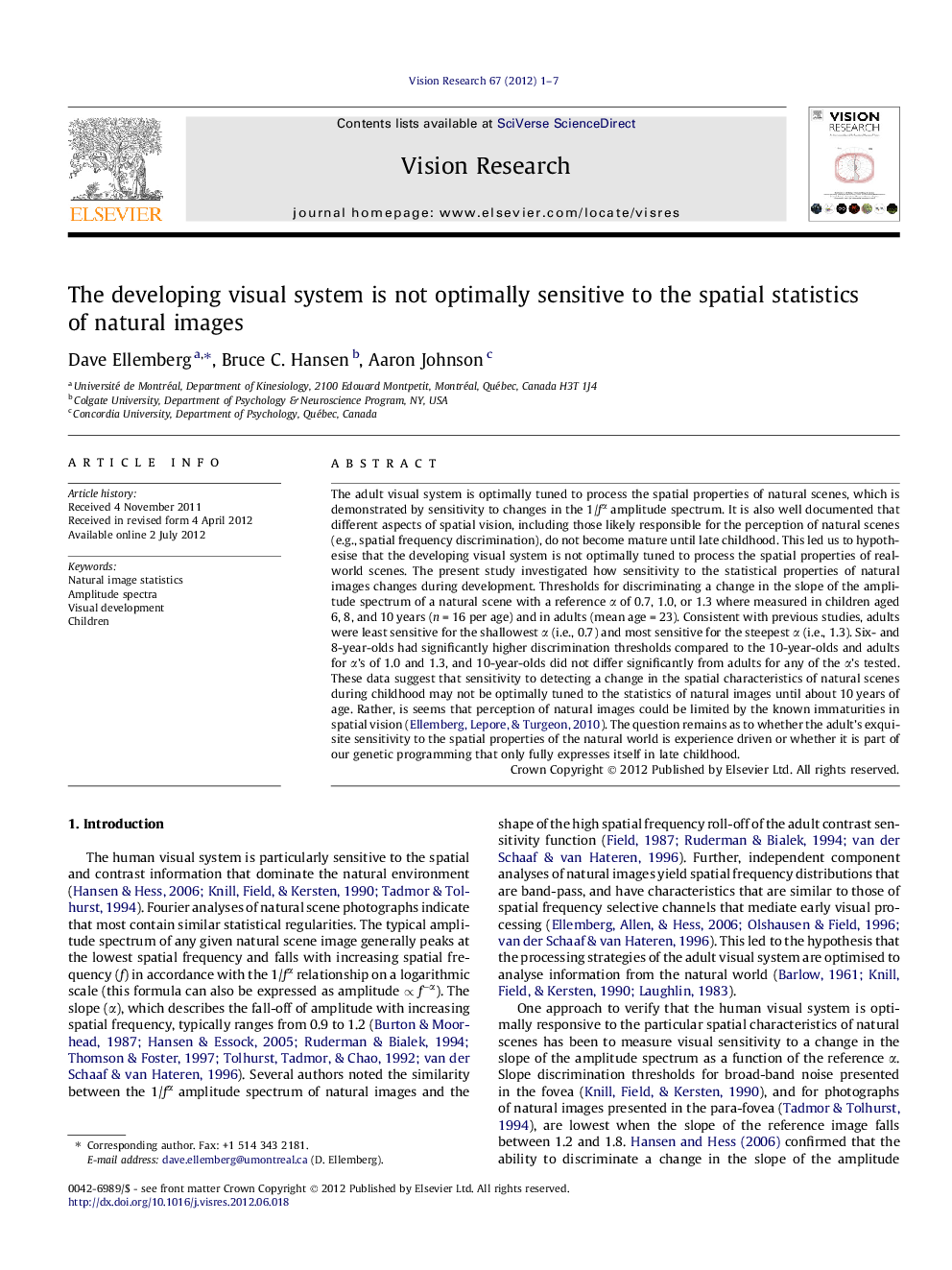| Article ID | Journal | Published Year | Pages | File Type |
|---|---|---|---|---|
| 4033970 | Vision Research | 2012 | 7 Pages |
The adult visual system is optimally tuned to process the spatial properties of natural scenes, which is demonstrated by sensitivity to changes in the 1/fα amplitude spectrum. It is also well documented that different aspects of spatial vision, including those likely responsible for the perception of natural scenes (e.g., spatial frequency discrimination), do not become mature until late childhood. This led us to hypothesise that the developing visual system is not optimally tuned to process the spatial properties of real-world scenes. The present study investigated how sensitivity to the statistical properties of natural images changes during development. Thresholds for discriminating a change in the slope of the amplitude spectrum of a natural scene with a reference α of 0.7, 1.0, or 1.3 where measured in children aged 6, 8, and 10 years (n = 16 per age) and in adults (mean age = 23). Consistent with previous studies, adults were least sensitive for the shallowest α (i.e., 0.7) and most sensitive for the steepest α (i.e., 1.3). Six- and 8-year-olds had significantly higher discrimination thresholds compared to the 10-year-olds and adults for α’s of 1.0 and 1.3, and 10-year-olds did not differ significantly from adults for any of the α’s tested. These data suggest that sensitivity to detecting a change in the spatial characteristics of natural scenes during childhood may not be optimally tuned to the statistics of natural images until about 10 years of age. Rather, is seems that perception of natural images could be limited by the known immaturities in spatial vision (Ellemberg, Lepore, & Turgeon, 2010). The question remains as to whether the adult’s exquisite sensitivity to the spatial properties of the natural world is experience driven or whether it is part of our genetic programming that only fully expresses itself in late childhood.
► Sensitivity natural image statistics is not mature in 6- and 8-year-olds. ► 6- and 8-year-old are 1.5 and 1.9 times less sensitive than adults. ► Little maturation takes place between 6- and 8-years of age. ► Sensitivity natural image statistics is mature in 10-year-olds. ► Adults are more sensitive for α’s ⩽ 0.9, kids are equally sensitive at all α’s.
